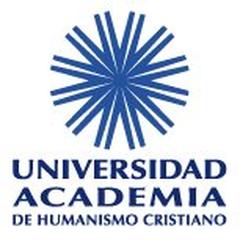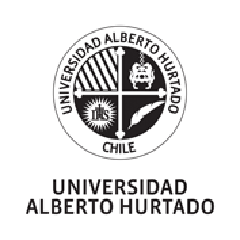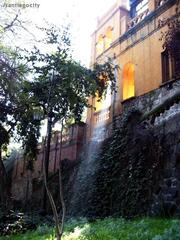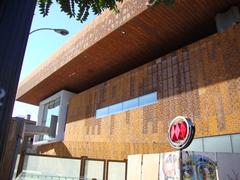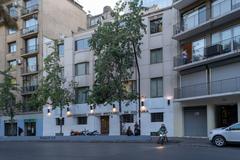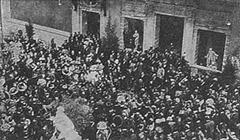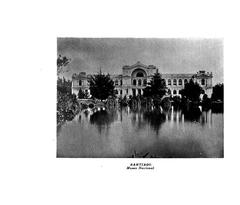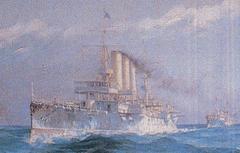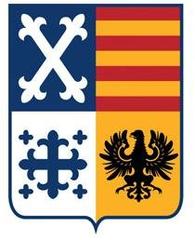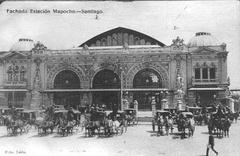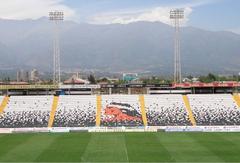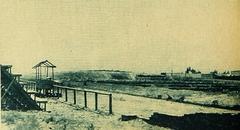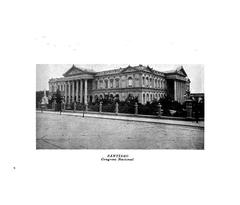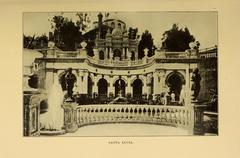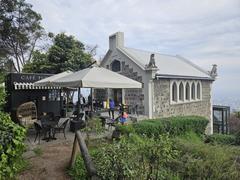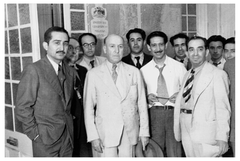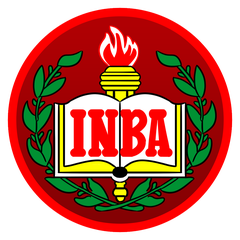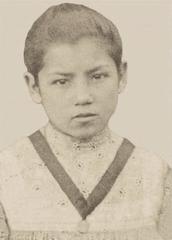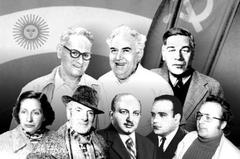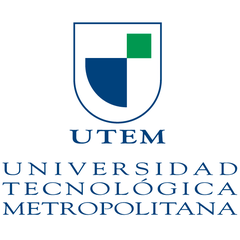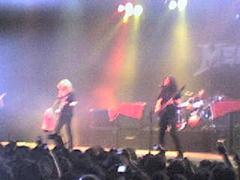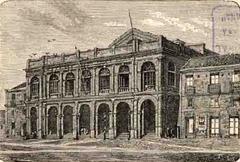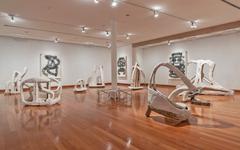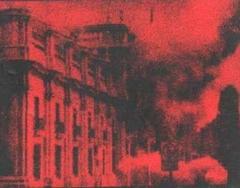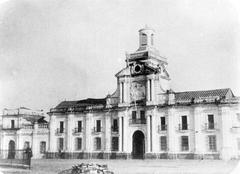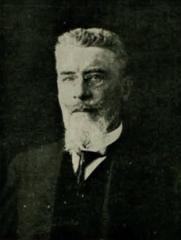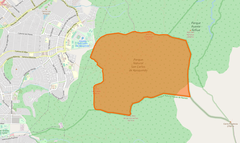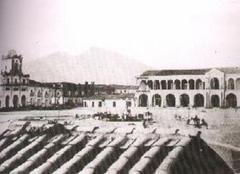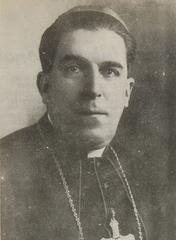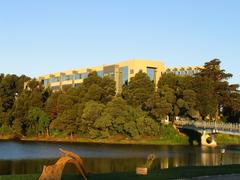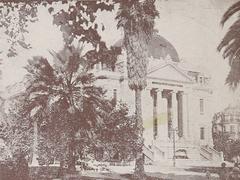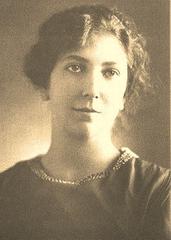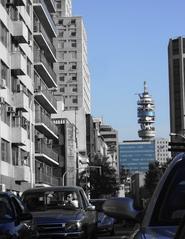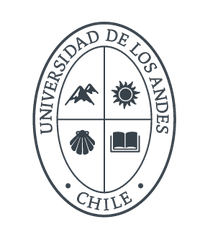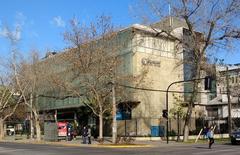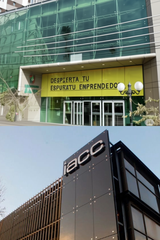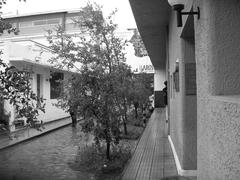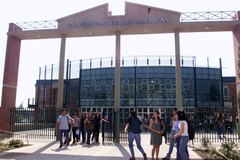University of Informatics Sciences Santiago, Chile: Visiting Hours, Tickets, and Travel Guide
Date: 04/07/2025
Introduction: Exploring Santiago’s Academic and Cultural Heritage
Santiago, Chile, is a city where tradition meets innovation, offering a dynamic blend of cultural heritage and academic progress. Among its notable attractions, the University of Informatics Sciences (Universidad de Ciencias de la Informática, UCI) stands out as a leading center for technological advancement. Located in the lively “Barrio Universitario,” this institution not only champions informatics education and research in Latin America but also provides visitors with a gateway to Santiago’s historical and cultural treasures.
The university’s proximity to iconic sites such as Plaza de Armas, Museo Nacional de Bellas Artes, and Pablo Neruda’s La Chascona makes it an ideal destination for those interested in both technology and history. Established as part of Chile’s ongoing commitment to academic and technological excellence, the University of Informatics Sciences plays a pivotal role in areas like artificial intelligence, cybersecurity, and big data analytics. Visitors have the opportunity to engage with the campus, attend lectures, and participate in tours, gaining insight into the institution’s contributions to Chile’s digital transformation.
This comprehensive guide will cover practical details for visitors—such as campus accessibility, visiting hours, ticketing, and travel tips—while also highlighting the nearby historical sites that can enrich your journey. For the latest information on hours, events, and guided tours, consult the university’s official resources and Santiago tourism platforms (University of Chile Visitor Information, USACH Visitor Info).
Contents Overview
- Introduction: Why Visit the University of Informatics Sciences?
- Historical Overview and Institutional Significance
- Visitor Information
- Research and Innovation Highlights
- Notable Alumni and Contributions
- Visual Experience
- Nearby Historical Monuments and Attractions
- Frequently Asked Questions (FAQ)
- Plan Your Visit
- Stay Connected
Discover Santiago’s Informatics Faculties: A Visitor’s Guide
Why Visit?
Santiago has evolved into a regional hub for technology and education. The informatics faculties at the University of Chile and the Universidad de Santiago de Chile (USACH) offer a window into the transformation of informatics sciences and their impact on Chile’s progress. Whether you are a student, a tech enthusiast, or a traveler, a campus visit is both educational and culturally rewarding.
Historical Overview and Institutional Significance
Origins and Development
Informatics education in Santiago traces back to foundational institutions such as the University of Chile (founded in 1842) and USACH. Both have pioneered informatics and computer science in response to 20th-century technological advancements. Their faculties lead research, education, and innovation across Latin America.
Institutional Milestones
- University of Chile’s FCFM: Renowned for academic rigor and influential research, it has produced many of Chile’s top engineers and IT professionals.
- USACH’s Faculty of Engineering: Recognized for applied research and industry connections, USACH plays a key role in the nation’s technology landscape.
Legacy and Impact
These faculties drive advances in artificial intelligence, cybersecurity, and data science, shaping Chile’s digital transformation and influencing both the public and private sectors.
Visitor Information
Locations and Accessibility
- University of Chile: The Faculty of Physical and Mathematical Sciences (FCFM) is located at the Beauchef and Andrés Bello campuses, easily reached via metro and bus lines.
- USACH: The main campus, on Avenida Libertador Bernardo O’Higgins, is also centrally located and well-served by public transport.
Visiting Hours and Admission
- Hours: Campuses are typically open Monday to Friday, 9:00 AM–6:00 PM. Access to certain labs or research centers may require prior arrangement.
- Admission: Entry is free. For guided tours or public lectures, check the universities’ websites for schedules and reservations.
Guided Tours and Special Events
- Campus Tours: Both universities periodically offer guided tours covering their history, research, and facilities. Booking in advance is advised.
- Lectures and Exhibitions: Public events highlight advances in informatics, often featuring international experts.
Visitor Tips
- Bring a valid ID for access.
- Comfortable shoes are recommended due to the size of the campuses.
- Photography is generally allowed; seek permission in research areas.
- Nearby attractions—such as the National Museum of Fine Arts and Parque Forestal—are easily accessible for additional sightseeing.
Accessibility
Both campuses are equipped with ramps, elevators, and accessible restrooms. Visitors with special needs should contact the university in advance for assistance.
Research and Innovation Highlights
The informatics faculties are home to research centers focusing on:
- Artificial Intelligence and Machine Learning: Collaborating with sectors like healthcare and mining.
- Cybersecurity: Advancing digital infrastructure protection.
- Data Science: Influencing public policy and business strategies.
Conferences and workshops regularly attract international participation.
Notable Alumni and Contributions
Distinguished alumni lead in academia, government, and industry, reinforcing Santiago’s reputation as a center of technological innovation.
Visual Experience
- Visit technology centers and campus museums displaying historical and modern computing artifacts.
- Explore libraries with extensive informatics collections.
- Notable photo spots: Beauchef campus gardens, USACH main plaza, and modern auditoriums.
(Consider using images with alt text such as “Beauchef Campus, University of Chile,” or “USACH Main Entrance, Santiago.”)
Frequently Asked Questions (FAQ)
Q: Are there entrance fees for campus visits?
A: No, entry is free.
Q: Are guided tours available without advance booking?
A: Advance booking is recommended.
Q: Is the campus accessible for visitors with disabilities?
A: Yes, with ramps, elevators, and accessible restrooms. Contact visitor services for support.
Q: Can I take photos on campus?
A: Generally, yes—in public areas. Permission is needed for labs.
Q: What is the best way to reach the campuses?
A: Both are well-served by metro and bus lines.
Plan Your Visit
For the latest details on hours, tours, and events, visit:
Nearby Attractions
- National Museum of Fine Arts
- Parque Forestal
- Santiago’s Historic Center
Stay Connected
Explore more about Santiago’s educational and cultural sites on our site. Download the Audiala app for interactive maps and real-time visitor information. Follow us on social media for updates and event notifications.
Exploring Havana’s Castillo del Morro: Visiting Hours, Tickets, and Insider Tips
Introduction
The Castillo de los Tres Reyes Magos del Morro—Castillo del Morro—is a landmark fortress at the entrance of Havana Bay, Cuba. This 16th-century stronghold offers insight into Cuba’s colonial era and panoramic city and sea views.
History and Cultural Significance
Built between 1589 and 1630 by the Spanish to defend against pirates and invasions, Castillo del Morro symbolizes Havana’s maritime history and resilience.
Visiting Hours and Tickets
- Hours: Tuesday to Sunday, 9:00 AM–5:00 PM. Closed Mondays.
- Tickets: 5 CUC for foreign tourists, 1 CUC for Cuban residents. Discounts for children and seniors. Tickets available at the entrance or online.
Getting There
Located about 15 km east of Old Havana, the fortress is accessible by taxi, bus, or organized tours. Parking is available.
What to See and Do
- Explore the fortress: Walls, cannons, watchtowers, and the lighthouse.
- Museum exhibits: Artifacts and displays on military history.
- Photo opportunities: Especially at sunset.
- Special events: Occasional cultural performances and exhibitions.
Nearby Attractions
- Old Havana (Habana Vieja)
- La Cabaña Fortress
- Hemingway Museum in Cojímar
Visitor Tips
- Wear comfortable shoes and bring water and sun protection.
- Most of the site is outdoors; check the weather.
- Photography is allowed; drone and flash photography may be restricted.
Accessibility
The fortress has ramps and handrails, though some steep areas may be challenging.
FAQ
Q: Are tours available in English?
A: Yes, book in advance.
Q: Is food available on-site?
A: A small café offers snacks and beverages.
Q: Can tickets be purchased online?
A: Yes, via the official tourism website.
Q: Is the fortress open at night?
A: No, it closes at 5:00 PM.
For more, see the Havana Tourism Official Site and UNESCO’s World Heritage Listings.
Visiting Santa Lucía Hill: Santiago’s Historic Monument
Introduction
Santa Lucía Hill (Cerro Santa Lucía), a central landmark in Santiago, is celebrated for its gardens, historic fortifications, and sweeping city views. Once a volcanic crater, it has played a vital role since Santiago’s founding.
History and Significance
Pedro de Valdivia founded Santiago atop Santa Lucía Hill in 1541. Over time, it evolved from a military site to a public park, featuring colonial architecture and the 19th-century Castillo Hidalgo.
Location and Access
Centrally located, Santa Lucía Hill is accessible via Metro Line 1 (Santa Lucía station), buses, taxis, and rideshares.
Visiting Hours and Tickets
- Hours: Daily, 8:30 AM–7:00 PM.
- Tickets: Free entry.
Guided Tours and Services
- Guided tours are available in Spanish and sometimes English during peak seasons.
- The visitor center provides maps and assistance.
- Facilities include restrooms, benches, and picnic areas.
Best Times to Visit
Visit in spring or autumn for pleasant weather. Early mornings or late afternoons are ideal for photography.
What to See
- Castillo Hidalgo: Explore battlements and cannons.
- Gardens and terraces: Enjoy statues, fountains, and landscaping.
- Panoramic views: Summit points overlook Santiago and the Andes.
Accessibility and Safety
Security personnel are on site. The hill is mostly accessible, though some steep sections may be challenging.
Visitor Tips
- Wear comfortable shoes and sun protection.
- No cafés on-site, but nearby dining options abound.
- Most signage is in Spanish; a translation app may help.
Nearby Attractions
- Plaza de Armas
- National Museum of Fine Arts
- Mercado Central
FAQ
Q: Is there an entrance fee?
A: No.
Q: Are tours available?
A: Seasonally, mainly in Spanish.
Q: Is the site wheelchair accessible?
A: Most areas are, but some are steep.
Q: Can I visit after dark?
A: No, closes at 7:00 PM.
Q: Are pets allowed?
A: Pets are generally not permitted.
COVID-19 Protocols
Most restrictions have been lifted, but masks may still be required in some areas. Check official sources before visiting.
Visiting the University of Informatics Sciences and Nearby Historical Sites in Santiago
Campus Overview and Visitor Information
The University of Informatics Sciences welcomes visitors Monday to Friday, 8:00 AM–8:00 PM. Prospective guests should consult the university’s website or visitor center for current tour schedules and ticketing details. Guided tours are typically offered during open days or tech fairs.
Accessibility and Location
The campus is near the historic “Barrio Universitario,” accessible via Metro and Transantiago buses. The Bip! card offers convenient travel, with discounts for students and seniors.
Visual Highlights
The campus features a mix of modern and historic architecture. Online resources include high-quality images and virtual tours.
Nearby Historical Monuments and Attractions
Plaza de Armas
A short metro ride from the university, Plaza de Armas is Santiago’s historic square, surrounded by landmarks like the Metropolitan Cathedral. Open 24/7; best visited during the day.
Museo Nacional de Bellas Artes and Museo de la Memoria y los Derechos Humanos
Both museums offer cultural context:
- Museo Nacional de Bellas Artes: Tue–Sun, 10:00 AM–6:00 PM.
- Museo de la Memoria: Tue–Sun, 10:00 AM–6:00 PM.
La Chascona
Pablo Neruda’s house in Bellavista, open Tue–Sun, 10:00 AM–6:00 PM. Tickets are available online and at the entrance.
Parque O’Higgins and Barrio Universitario
Enjoy green spaces, cultural events, and historic university buildings.
Practical Visitor Tips
- Language: Spanish is primary; English signage is growing.
- Transport: Use Metro and Bip! card for efficient travel.
- Safety: Tourist areas are generally safe.
- Weather: Dress in layers.
- Tickets: Student discounts available at many sites.
FAQ
Q: Are tours available at UCI?
A: Yes, during special events—check the website.
Q: Is weekend access possible?
A: Generally open on weekdays; check for special weekend events.
Q: Do museums require tickets?
A: Yes, with discounts for students and seniors.
Q: What are the best nearby sites?
A: Plaza de Armas, Museo Nacional de Bellas Artes, La Chascona, Parque O’Higgins.
Q: Is the university area safe?
A: Yes, especially during the day.
Summary and Staying Updated
Visiting the University of Informatics Sciences in Santiago offers a unique blend of technological innovation and cultural exploration. The university’s central location makes it easy to combine your visit with nearby museums, monuments, and historic neighborhoods. To make the most of your visit, check official websites for updated schedules, book tours in advance, and use Santiago’s reliable public transportation. Download the Audiala app for interactive maps and audio guides, and consult these sources for the latest information: University of Chile Visitor Information, USACH Visitor Info.
Sources
- Visiting the Informatics Faculties in Santiago: Hours, Tours, and Historical Insights, 2025, https://uchile.cl/english-version/presentation/general-information
- University of Santiago de Chile (USACH) Visitor Info, 2025, https://www.usach.cl/en
- Exploring the University of Informatics Sciences and Nearby Historical Sites in Santiago: Visitor Guide, Hours, and Tips, 2025
- Visiting the Santa Lucía Hill Monument in Santiago: Hours, Tickets, and Visitor Guide, 2025
